Making heifer introduction stress-free
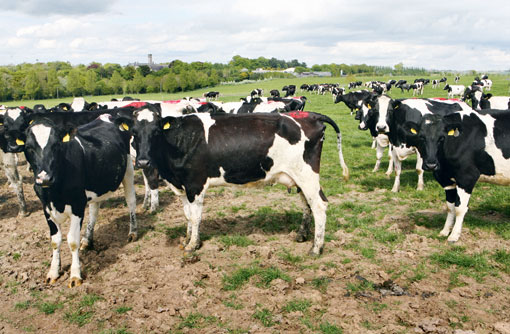
In the most extreme case, the “introduction heifer” has no experience with the feed fence, cubicles, floor, feed, herdsperson, milking parlour, other cows or moving around in the herd.
So, regardless of the building design, the heifer first needs to find out what everything is and how she should deal with it.
Introduction period
Cows need two to three weeks to learn things. In the last two weeks before calving, the heifer should not undergo any changes in housing or feeding. Therefore a heifer should be introduced into the milking herd facilities four weeks before calving at the latest, plus a buffer of one to two weeks as we cannot predict the exact date of calving.
So at six to eight weeks before expected calving date, you should start preparing every heifer for a healthy and low-stress start to her first lactation.
You want to ensure her health and nutritional status are correct and also lift her feet to check the health of her claws. If anything is not at the right level, you still have time to correct it.
It is an excellent working procedure to run every heifer through a hoof-trimming box six to eight weeks before calving. At that moment you can also clip her udder and tail and put a magnet in her rumen.
Even when the heifer is already accustomed to the cubicles, barn, feed fences, floor, other cows and feed, and has gone through the parlour a couple of times before calving, many farmers still find that this process saves time and stress.
| 1. When cubicle dimensions are large enough for big cows, smaller cows and heifers are likely to drop their dung and urine in the cubicles. A separate group with heifers and small cows increases heifer production and helps solve this “cubicle dimension dilemma”. | 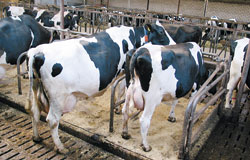 |
| 2. Don’t underestimate the negative effects of foot pain on the behaviour and feed intake of a heifer (or a cow). This heifer has digital dermatitis and eats poorly, as her rumen fill shows. Make sure feet are perfectly healthy and have the correct shape at calving. | 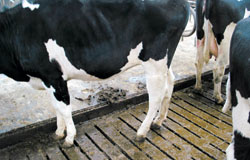 |
| 3. Heifers are often among the last cows in the waiting area. Give at least 1.5sq m of space for every animal and don’t use the backing gate as a cow pusher. Take a moment every now and then to observe cow behaviour in front of the backing gate. | 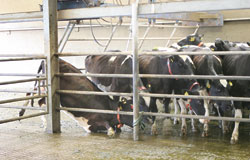 |
| 4. A month after calving, you should see both the rumen (left-hand side) and the guts (right-hand side) bulging out on both sides of a cow. This heifer is not eating enough, because of foot problems. | 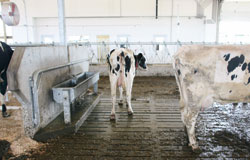 |
| 5. If more than 10% of the heifers have poor abdomen fill, like this heifer, it’s essential to find out what is going wrong. | 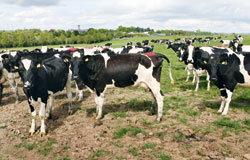 |
| 6. This heifer has the right size and bodyweight and is not afraid of humans – two important conditions for successful heifer introduction. | 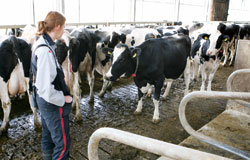 |
Lowest in rank
Cows are social animals that obey a hierarchy. But they need that hierarchy and its associated social behaviour to be stress-free in order to perform. The first few days after their introduction to the herd, heifers feel insecure, cling together and remain standing.
This teaches us that it is best to introduce heifers in groups and that stressed heifers are at risk from overloading their hooves because they hardly lie down.
Correct facilities enable heifers to escape and show respect to dominant cows – no slippery floors, no dead-ends and always two or more passages. There should also be enough space for heifers to avoid the boss cows.
Dominant cows claim the best feed and resting areas, and like to confirm their status by blocking access to water troughs. Therefore there must be good, dry, comfortable resting areas for every cow.
Key points
- Introduce heifers into the milking herd facilities six to eight weeks before calving
- Heifers should join the main herd in groups to reduce stress
- A separate heifer group will improve management and reduce stress
- Ensure no slippery floors or dead-ends and always allow two or more passages so low-ranking heifers can avoid dominant cows
All cows should be able to eat at the same time and there must be enough water troughs distributed over the available area so the heifer can bow her head to the dominant cow from a distance and drink at another trough.
Cows want to eat and lie down at the same time. In situations where this is impossible, the low-ranking cows will have to eat when other cows are lying down and vice versa. This creates stress as they prefer to do the same as the rest of the herd.
As a result, they eat fewer meals, eat faster and eat less, which brings heavy risks for ketosis and acidosis. Plus they will be standing for too much time. In this scenario, in herds with concentrate dispensers, the heifers usually consume all of their concentrate allowance, but not the estimated amount of roughage at the feed fence – again creating an acidosis risk.
A separate heifer group creates a greater opportunity for rest for these animals, plus more feed intake and higher milk production of up to 15-20%. In cubicle barns, join them with the smallest mature cows so you can adjust the cubicle size to the size of the cows in the group, both in the heifer/small cow group and in the mature/large cow group. These older cows will also teach the heifers about hierarchy and how to behavein a mature herd.
Dr Jan Hulsen has written a series of books on cow management and is co-founder of the Cow Signals training company. The Cow Signals concept draws on what cow behaviour can tell you about their environment and management. To find out more visit www.vetvice.com
Perception is key to successful handling
